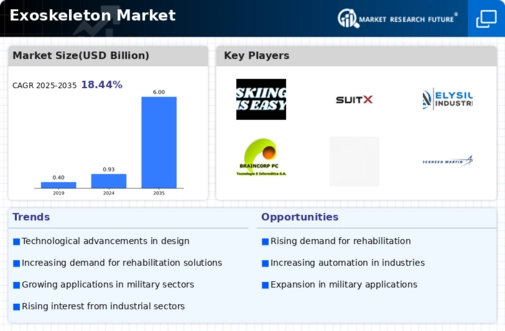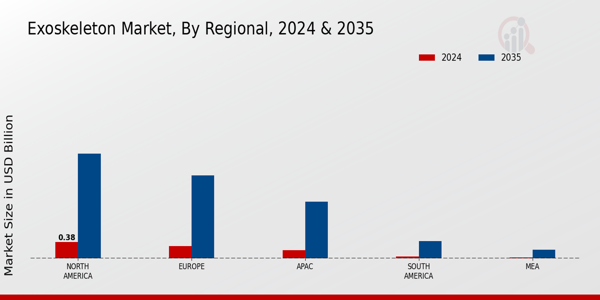The Global Exoskeleton Market has been witnessing significant advancements driven by technological innovations, increasing demand for rehabilitation solutions, and the growing awareness of the potential benefits of exoskeleton systems in various applications. As industries such as healthcare, military, and industrial sectors continue to explore the capabilities of wearable robotics, the competitive landscape is evolving rapidly. Companies are now focusing on improving mobility assistance, rehabilitation processes, and enhancing workforce productivity. With the integration of artificial intelligence and robotics in exoskeleton development, competition is intensifying, leading to an influx of products and solutions designed to meet diverse consumer needs across geographical regions.
The market is characterized by key players continually investing in research and development, forming strategic collaborations, and expanding their product portfolios to establish a robust foothold in this emerging sector.
Everyway Health stands out in the Global Exoskeleton Market for its commitment to enhancing the quality of life through innovative rehabilitation solutions. The company focuses on developing advanced exoskeleton systems that empower users to achieve their mobility goals effectively. With a strong presence in the market, Everyway Health leverages its expertise in robotics and rehabilitation science to offer state-of-the-art products that cater to individuals with mobility challenges. The company's strategy includes cultivating partnerships with healthcare providers and rehabilitation centers, ensuring that its technology is effectively integrated into treatment protocols.
By continuously investing in innovation and user-friendly design, Everyway Health positions itself as a trusted leader in the exoskeleton market, championing the cause of mobility improvement for patients globally.Skiing has emerged as a pivotal player in the Global Exoskeleton Market, particularly renowned for its focus on enhancing performance and safety in extreme outdoor activities.
The company offers a suite of exoskeleton products designed to provide additional support and power to active users, significantly improving their endurance and reducing fatigue during skiing excursions. Skiing's advancements in technology have allowed it to develop cutting-edge products that not only enhance performance but also prioritize injury prevention and rehabilitation. The market presence of Skiing is strengthened by its ongoing collaborations and partnerships with outdoor sporting organizations and research institutions. Furthermore, the company’s strategic mergers and acquisitions have bolstered its capacity to innovate and meet the evolving needs of a global audience passionate about skiing.
Through its commitment to pioneering technological solutions, Skiing continues to push the boundaries of what exoskeletons can achieve in sports and recreation, driving growth and interest in the Global Exoskeleton Market.





















